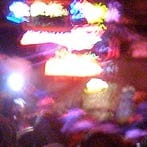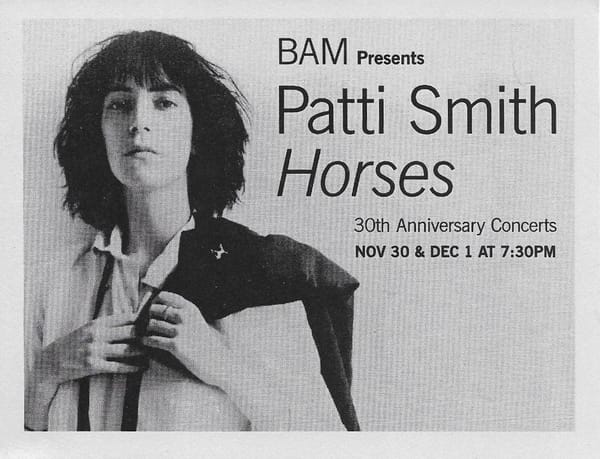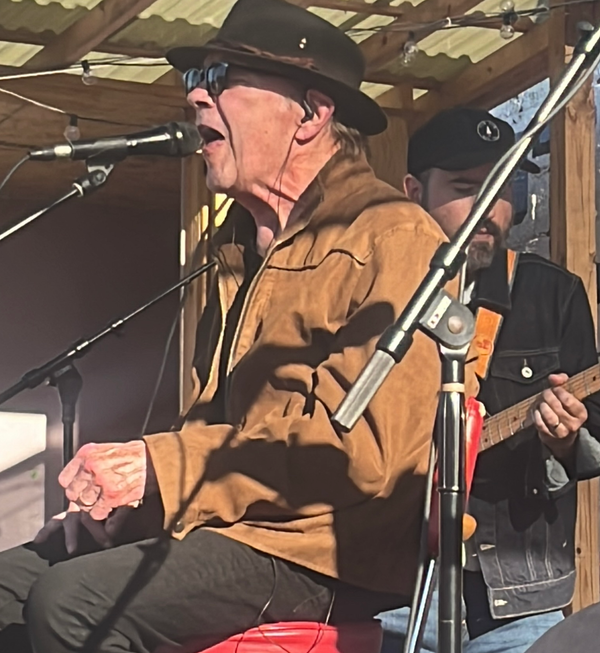pilgrimage: the Monterey International Pop Festival
I think that maybe I'm dreaming
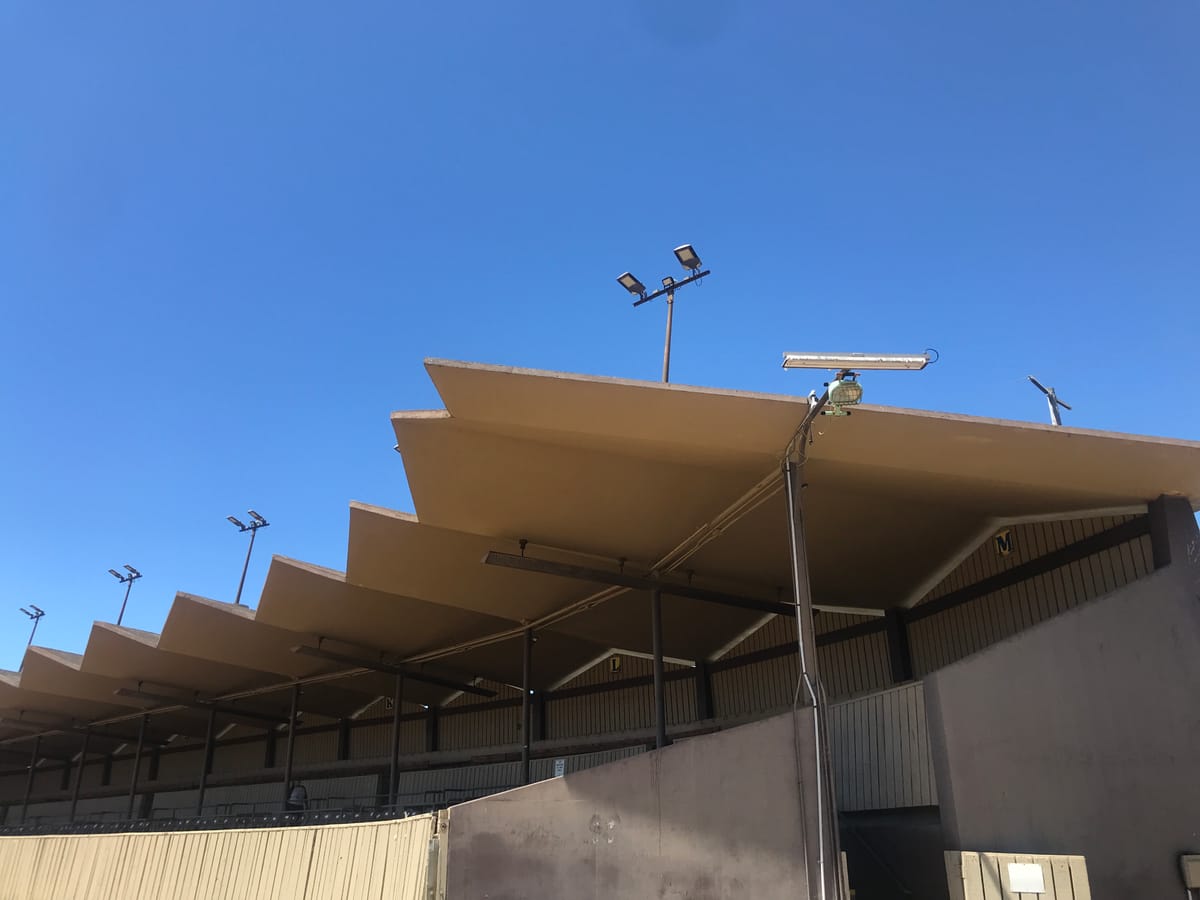
pilgrimage is a series of essays about journeys to places where magic happened. It's about why we go there, why we want to remember, and why it's important that we do. I hope these journeys inspire you to find and make your own places. You can read the rest of the essays in the series here.
Otis Redding at Monterey Pop is this heart-wrenching mixture of incredible and heart-breaking. Incredible because, well, it’s Otis Redding, who was a phenomenal live performer. Heart-breaking because it was a genuine breakthrough moment for him vis-a-vis popular culture at large, and then the plane crash happened six months later.
His set at Monterey is so incredibly short, but absolutely jam-packed with energy and excitement. There’s now a standalone Shake! Otis At Monterey special feature that contains his entire set as opposed to the excerpt that’s in the larger Pennebaker Monterey Pop film and you can watch this on the Criterion Channel, and I am obviously here recommending that you do. It is only 20 minutes! Otis changed the trajectory of popular music as well as his own career in less time than half an hour.
Tommy Smothers introduces him, with this unspoken implication that for some reason this crowd wouldn’t favorably receive him, and he’s not wrong because people were leaving and I really have nothing to say about that, and then Otis comes out and is immediately at 15 with “Shake!” like he had already been in the middle of a set. That is what Otis did but it is the first time he did it for a crowd not specifically there to see him. According to long-time San Francisco music critic Joel Selvin, the people in the aisles stopped in their tracks. Good.
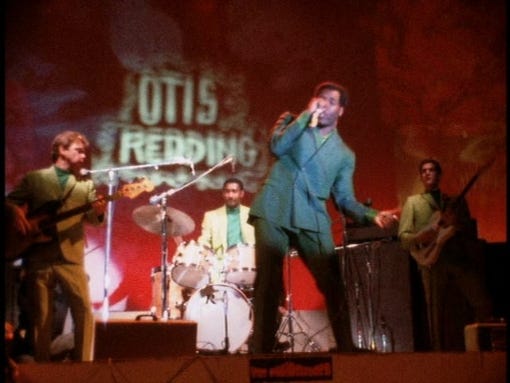
The baby-faces of Booker T. and the MG’s behind Otis (in lime-green mohair suits) are adorable but the aspect that I found the most revelatory in this recent re-watch is not the precision or the mastery - I already know this - but the supreme casualness. There’s a moment in “Shake” where Duck Dunn pauses, drops his hands from the fretboard for half a bar, and then is instantly back there. It’s not surprising so much as it is fascinating and delightful. The band usually didn’t tour with Otis -- they were always too busy as the Stax house band in the studio -- but Otis had recorded a live album in Paris with them and a decision was made to bring them along to Monterey because this was an opportunity to break through to a white audience and when you watch the elegance and the ease with which the MG’s and the Mar-Keys sweep the floor of everyone who had preceded them on that stage, you are grateful that they did.
When I was at the recent Nuggets 50th anniversary shows in New York, I got irked at Richard Lloyd for what I perceived as a diss against Aretha Franklin, where he referred to her as “that girl.” What I did not remember, and wish to apologize for, is that he was literally just quoting Otis at Monterey. Otis introduces the second song in the set with “This girl, she just took this song, but I’m still gonna do it anyway,” which is consistent with every statement he made about Aretha’s “Respect” after it came out. Aretha’s version swings, Otis’ is high-octane super-fuel. There is a place in this world for both versions and he knew that.
“We’re gonna slow it down this time, and sing a soulful number. This song is a song that we all oughta sing some time… this is the love crowd, right?” He’s breathing just a little bit hard but gracefully, effortlessly segues into “I’ve Been Loving You Too Long,” and this is where you get to truly appreciate the majesty of Otis as a performer and of the musicians behind him. He gets to the end of the first verse -- “I’ve been loving you too long/and I don’t want to stop now--”
The band hits three breaks in succession, punctuated by Otis shouting. He pauses, turns back to the band: “Can we do that one more time?”
This is the MG’s. Of course they can.
“Now! Now! Now!”
“Do it just one more time,” he requests, with a sly grin on his face.
“Now! Now! Now!”
“Just one more time!”
They oblige, and without breaking a sweat he glides into the next verse.
I wish that I did not hear the bonehead who thought it was appropriate to bring a tambourine to Monterey Pop and thought it was groovy to use it to applaud with. It is not someone onstage, no one on that stage would play a percussion instrument so sloppily.
And then just when you think you’ve seen the most masterful part of the set, Otis turns up the intensity on the last verse, pleading, begging, proclaiming his love, declaring himself -- and he raises his arm, which cues the band that he’s done, and they snap to it with a kind of rounded precision - they’re not caught offguard, they’re not rushing to end the song, they’re closing it neatly. Steve Cropper noodles a bit of “Soul Man.”
THE FUCKING TAMBOURINE
“This is a song I want to dedicate to all the miniskirts,” Otis says to introduce “Try A Little Tenderness,” and this is the worst part of the film, not because of the music, but because D.A. Pennebaker thought it would be better to string together all the outtakes his team had filmed of various women at the festival instead of watching Otis Redding sing one of his trademark numbers. Thanks, dude.
I first saw DA Pennebaker’s Monterey Pop Festival documentary on PBS one Saturday night when I was babysitting my siblings. My brother asked what I was watching, and I responded, “It’s the time Jimi Hendrix lit his guitar on fire” and that got him to sit down and watch it with me. He’s two years younger than me so he also grew up on FM radio, which meant he was familiar with the canon, at least, by osmosis.
Becoming a diehard Who fan in my teens meant that I had a head start on recognizing the significance of the Monterey Pop Festival. Or at least I knew what it was and how it happened and had seen the photographs of Jimi kneeling on the ground, conjuring flames from his Strat. Being able to watch the film was like walking through the wardrobe into Narnia. It really happened! There’s Brian Jones walking around like everybody else. There’s Cass Elliot losing her shit when Janis Joplin sang “Ball and Chain.” There’s John Phillips in his stupid furry hat. It was my first glimpse of Otis Redding performing live, which definitely rearranged some molecules in my brain. It was one of those …oh. oh wow moments, where it sunk in that there was so much I didn’t know and needed to know, immediately.

The first time I watched Monterey Pop I didn’t know the rest of the history, like how Big Brother and the Holding Company had appeared on Saturday and refused to be filmed unless they were paid, until afterwards when they blew everyone’s minds and then realized they needed to be in the movie so they got added to Sunday’s lineup so they could be filmed. Or that Neil Young didn’t show up to play with Buffalo Springfield so David Crosby subbed for him, which was a good thing because he was about to get fired from the Byrds. (Or that the reason the Byrds aren’t in the film was because Crosby engaged in these between-song monologues about the JFK assassination). That’s the kind of stuff that runs through my head when I watch it now.
I recently re-watched Otis because when I was doing research for the newsletter on “Sweet Soul Music,” I got pulled into re-reading Peter Guralnick and it’s a good thing because I got to renew my acquaintance with fun tidbits like how Otis and the entire band went out and bought brand new mohair suits to wear. Monterey was in June, but as I recently learned when I was in the area in August seeing Patti Smith on her recent Pacific Coast tour, it was not East Coast or Midwest late summer weather. Monterey is on the coast, you’re waking up to fog or some kind of marine layer. I feel bad for the girls in miniskirts and probably worse for the girls wearing miniskirts with fancy tights just because while they looked super-cute they could not have been comfortable.
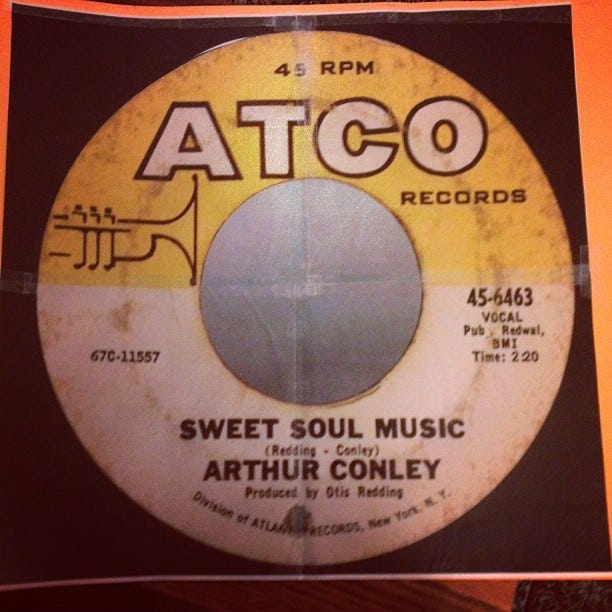
Monterey was held at the Monterey County Fairgrounds, which is located in the southeastern part of the town, near the airport. It’s the kind of place where they hold rodeos and the Artichoke Festival. And it’s pretty much unchanged from when Monterey Pop was held on the grounds, or at least the grandstand was still there and still immediately recognizable, which I learned from my advance sleuthing on Google Maps.
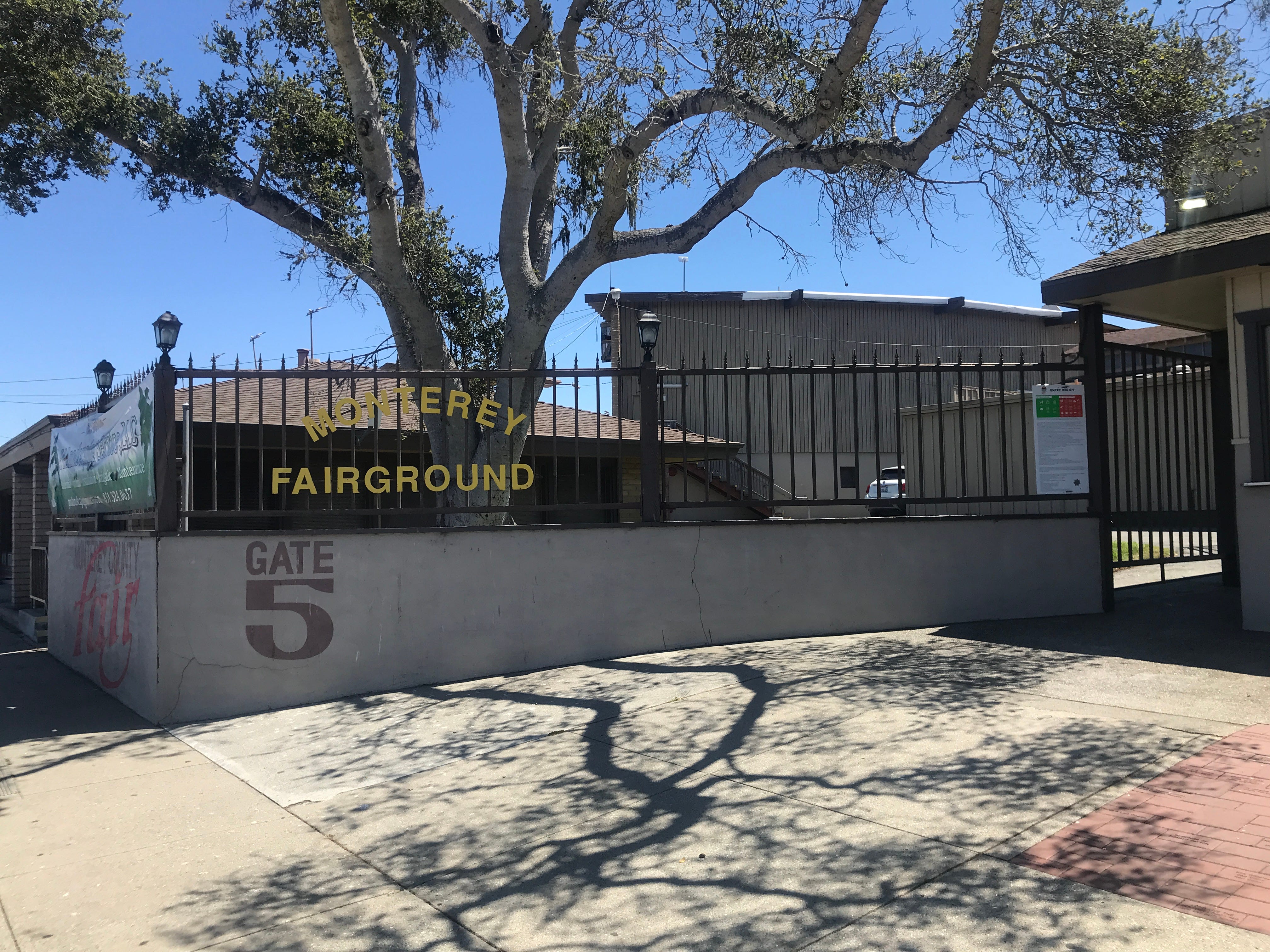
I usually embark on these gambits solo. A lot of that is because it is very hard to explain to people why you want to go to this thing that no longer exists, or exists only in spirit, or that what I really want to do is just kind of walk around and look for ghosts or some kind of amorphous vibe. But when I went out to California in August, I was with my old friend T., and she was driving, and she didn’t blink an eye a few years earlier when we were coming back through Sausalito and asked if I wanted to see anything and I mentioned that Janis Joplin briefly lived there at a formative time and the house was still around.
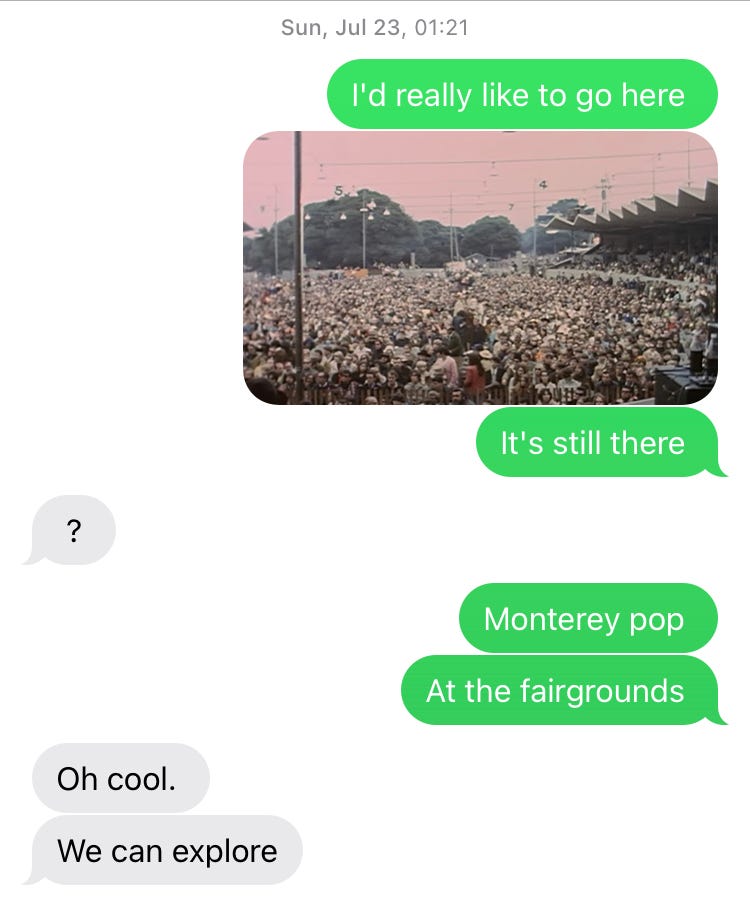
So the day after seeing Patti in Monterey, we drove out to the fairgrounds, hoping the gates were open. You could see that zig-zag rooftop as we pulled up next to an open entrance, along with all of those small rustic buildings you can see in the color footage of the crowd that are for exhibits or vendors. The stage was screened off so I didn’t even try to get up on it, but the rest of the place was wide open and looked absolutely the same. The ground is dirt but it was dirt in 1968. There were long wooden benches in the stands with hand-painted numbers. It felt as though it had just been sitting dormant, suspended.

Otis was on that stage. Janis sang here. The Who trashed their gear. Ravi Shankar played a stunning set to a silent crowd of flower children who had never seen live Indian music performed. Sometimes when I do this I have to dig deep to find a connection or vibe with whatever memories are in the ether; I did not have to do that here. I always want to try to see what people saw when things happened.
I know this isn’t quantitative analysis. It’s not supposed to be.

It also looked like it would have been an acoustic nightmare but if you’ve watched it, when the Byrds are soundchecking, David Crosby is so happy because it sounds so good. But given most of the shit venues with shit sound that artists in the 60s had to deal with on the regular, it was probably a blessing by comparison. The space felt the same size as you get from watching the movie, it wasn’t markedly larger or smaller, and it also had a fair amount of its own inherent character as a space. I’m sure the benches sucked to sit on just as much as the folding chairs that were on the floor, but even empty in the middle of a random Saturday it had more personality than any modern arena or outdoor amphitheater.
I’m not surprised there’s nothing here to pay tribute or commemorate the event because it’s inconvenient and costs money and takes effort and we still act like rock and roll fans are inherently destructive (while sports fans never get repercussions for anti-social behavior), and when outside forces get involved it usually ends up making a mess of things.
But individuals who care can still go visit places like this and make our own journeys to where great things happened, and it’s important to the culture and to our own spiritual or internal lives. It was so profound to stand in that place for 20 minutes, on a level I am always surprised by. I always feel a little bit dumb, or weird, but it’s not dumb and I don’t care if it’s weird. I’m the one who’s gonna be sitting over in the corner reminding everyone what happened. I’m okay with that.

